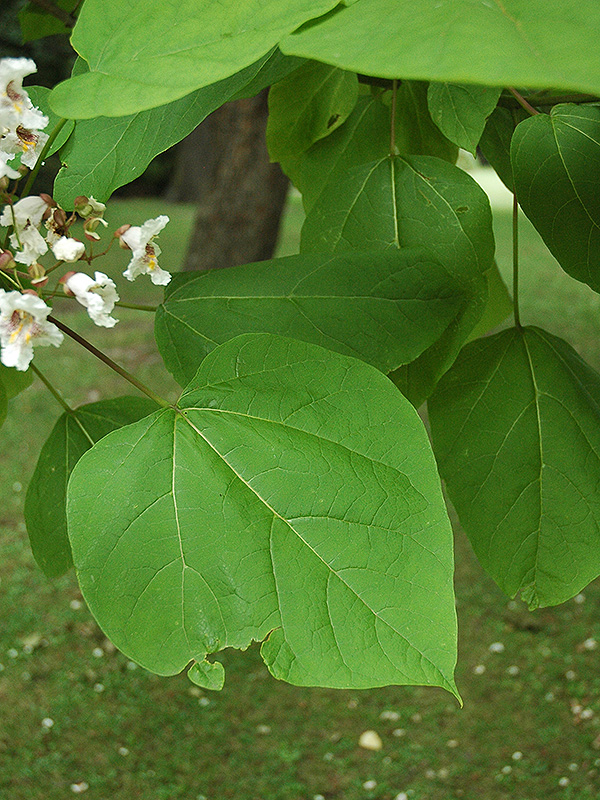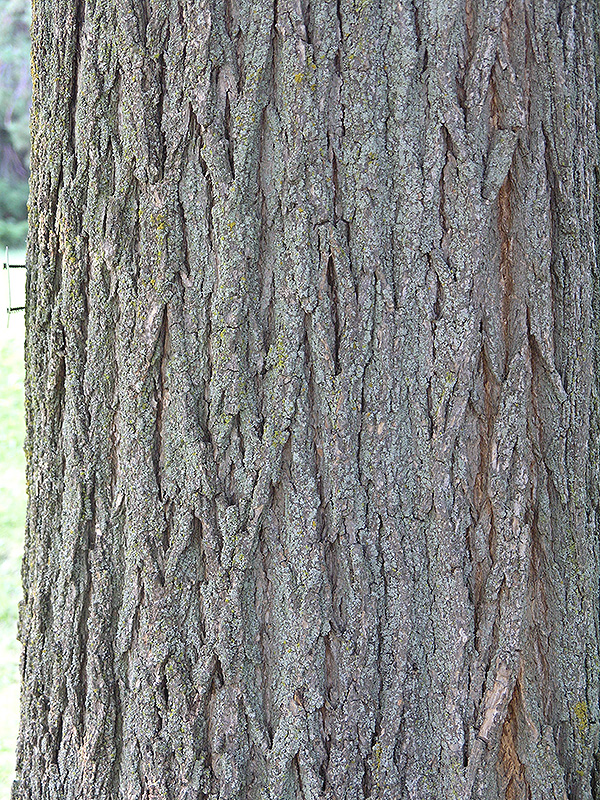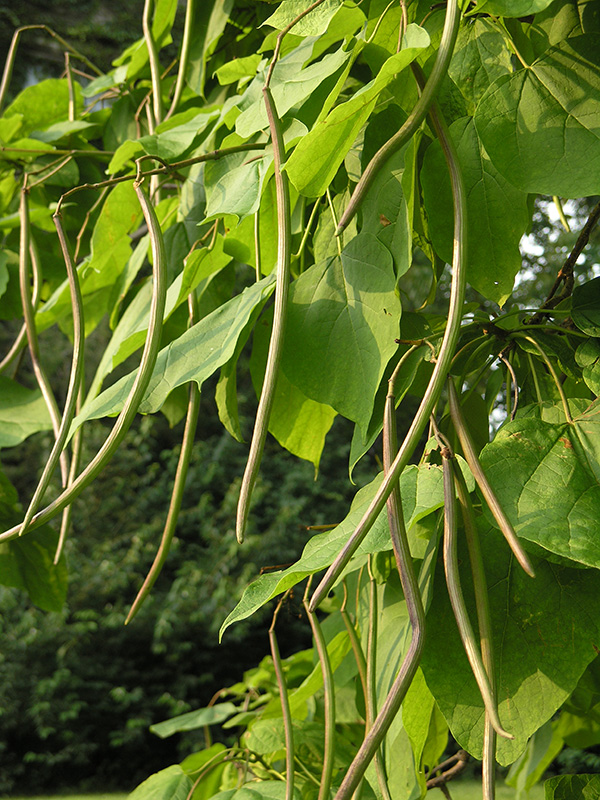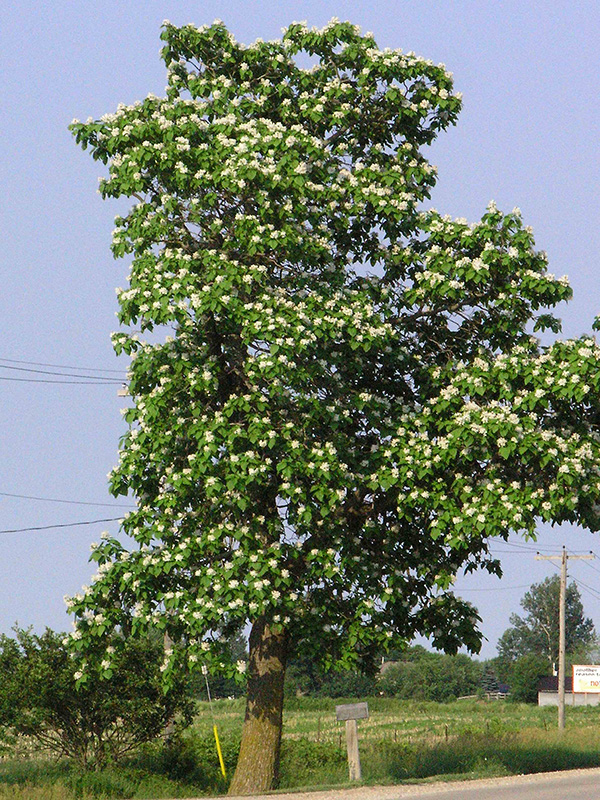| Shape | Tall, irregular, open-rounded to narrow-oval crown. |
| Landscape | Large gardens, open spaces and parks. |
| Propagation | Seeds, cuttings and root cuttings. |
| Cultivation | Full sun and partial-shade. Moist, well-drained, deep, fertile soil with alkaline pH. Deer and drought tolerant. |
| Pests | Susceptible to verticillium wilt, leaf spots, mildew and twig blight. The larvae of the catalpa sphinx moth may cause damage. |
| Notable Specimens | The Univeristy of Western Ontario, London, Ontario, Canada.
The Living Center, Delaware, Ontario, Canada. |
| Habitat | Bluff bases, lowland and upland woods. |
| Bark/Stem Description | Fissured and prominently ridged. |
| Flower/Leaf Bud Description | Terminal, absent, lateral, small and hemispherical.
|
| Leaf Description | Broad ovate to ovate-oblong leaves that are pointed at the tips and rounded to cordate at the base. 15 - 30 cm long. |
| Flower Description | Bell-shaped, orchid-like appearing in panicles in late pring. 5 cm long. |
| Fruit Description | Long slender seedpods that are 30 cm long. The seedpods mature in autumn and split open lengthwise to release seeds within. |
| Colour Description | The leaves are light green to yellowish-green and turns yellow in autumn. The flowers are white with purple and yellow inner spotting. The seedpods are green and as they mature become a dark brown colour. The bark is a pale greyish-brown. |






